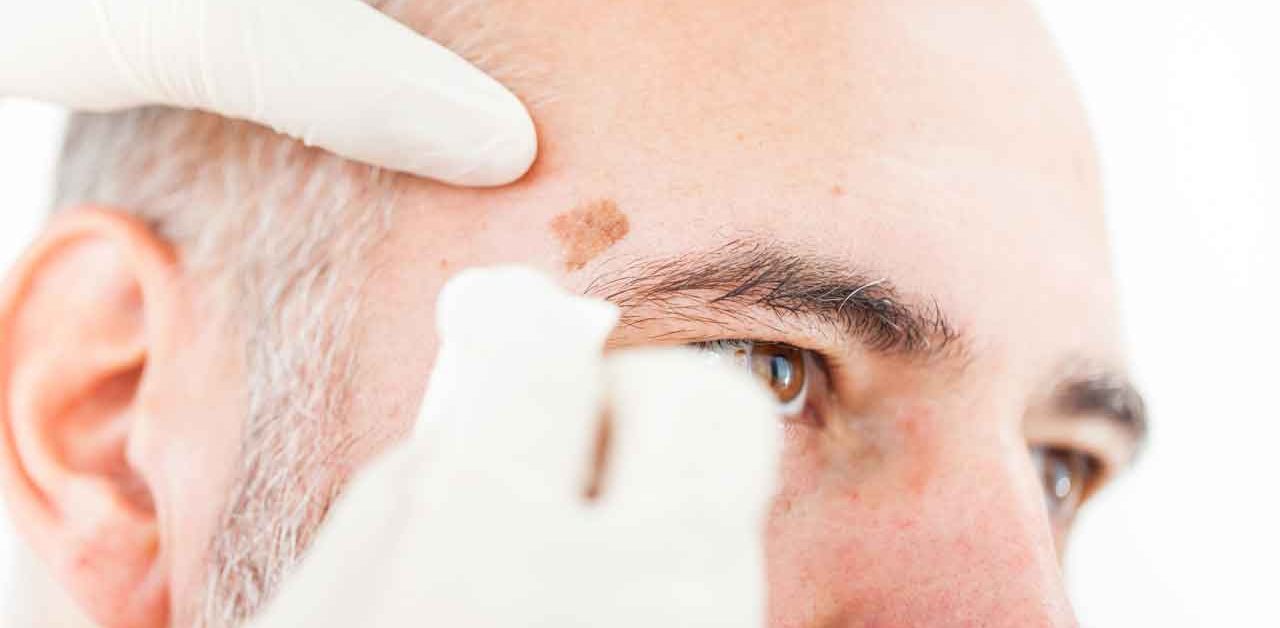Basal Cell Cancer Symptoms

Basal cell cancer, the most common type of skin cancer, is easiest to treat if it’s spotted early. Learn about basal cell cancer symptoms and what to do.
Although skin cancer is more common in people with a light skin tone, the National Cancer Institute points out anyone can get skin cancer. There are several types of skin malignancies, but one, basal cell cancer (also known as basal cell carcinoma), is by far the most common type. In fact, nearly four million Americans are diagnosed with basal cell cancer (BCC) each year.
BCCs are abnormal and uncontrolled growths that develop in the epidermis, the outermost layer of your skin. Although it is extremely rare for this type of skin cancer to spread to other parts of your body and become life-threatening, the Skin Cancer Foundation warns that you should not ignore basal cell cancer symptoms. If not treated at an early stage, this skin cancer can become disfiguring because BCC can grow wide and deep, damaging skin, tissue, and bone.
That’s why it makes sense to know basal cell cancer symptoms and to do a regular self-check to keep tabs on any changes in growths on your skin.
YOU MIGHT ALSO LIKE: Skin Cancer Causes
Where basal cell cancer symptoms appear
Both long-term sun exposure over many years and occasional intense sun exposure (the kind that causes sunburn) are believed to cause damage that can lead to BCC. While sunbathing and other forms of sun exposure, especially without protection from the sun’s ultraviolet (UV) radiation, are linked to this common skin cancer, people who use tanning beds also raise their risk of BCC (and tend to get it earlier in life).
These factors explain why BCC usually develops on areas of your body most exposed to UV radiation. Often, basal cell malignancies are found on your nose and other areas of your face and head frequently exposed to sunlight.
BCC is also commonly discovered on your neck, the back of your hands, and shoulders. It can also appear on any part of your body, including your trunk, legs, and arms, the American Academy of Dermatology notes.
Recognizing signs and symptoms of BCC
Although rare, basal cell skin cancer can feel itchy and sometimes painful. The only sign of BCC, however, is usually a growth on your skin.
Although this type of skin cancer frequently appears as a small white, or flesh-colored raised bump, the American Academy of Dermatology explains it can show up on your skin in different ways, including:
- A hard, pale white to yellow or flesh-colored growth that looks like a scar. This form of BCC typically has a waxy feeling, and it may be difficult to make out the edges of the growth.
- A dome-shaped skin growth with visible blood vessels. This type of BCC is grows slowly and most is often pink or skin-colored. It can also be black, brown, or contain flecks of those colors. It may appear flat or sunken in the center like a crater. It may ooze, crust over, and bleed easily.
- A shiny red or pink patch that is a slightly scaly patch. When BCC takes this slow growing form, it most often appears on your trunk and can be mistaken for an area of eczema, changes in skin color, and sores that don’t heal and may crust or bleed.
If you spot any changes on your skin that do not go away within one month, the National Cancer Institute advises seeing your doctor for an examination and, if needed, a biopsy.
Updated:
May 25, 2023
Reviewed By:
Janet O’Dell